As dawn pierced Rotorua’s night sky, this year’s Anzac Day dawn service was not only a time to remember those who had given their lives at war, but those who kept the home fires burning.
Thousands packed Ohinemutu’s Te Papaiouru Marae this morning stretching from Lake Rotorua’s water’s edge, around the graves of the Muruika Soldiers’ Cemetery, past St Faith’s Church and back towards Tamatekapua Meeting House.
 Sir Robert (Bom) Gillies - the sole surviving member of the 28th Māori Battalion takes his position at the dawn service. Photo / Andrew Warner.
Sir Robert (Bom) Gillies - the sole surviving member of the 28th Māori Battalion takes his position at the dawn service. Photo / Andrew Warner.
In the calm and dark morning, the steam rising from the nearby geothermal activity set a fitting backdrop as the last surviving member of the 28th Māori Battalion, 99-year-old Sir Robert (Bomb) Gillies, marched impressively past the dignitaries to take position near the front before the proceedings got under way.
Te Arawa Māori Returned Services League president Pererika Makiha welcomed the crowd and introduced guest speaker, Sqaudron Leader Poihaere Knight.
He says much thought went into selecting the guest speaker and for this year it was agreed it was time to acknowledge wahine (women) and especially those who stayed home during wartime and kept families together.
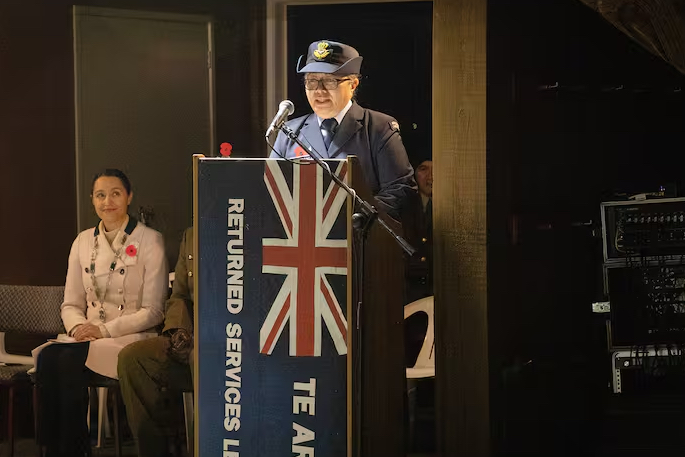 Dawn service guest speaker Squadron Leader Poihaere Knight. Photo / Andrew Warner.
Dawn service guest speaker Squadron Leader Poihaere Knight. Photo / Andrew Warner.
Knight, originally from Gisborne, speaks Japanese, Spanish, Māori and English, has a Bachelor of Theology and is a trained secondary school teacher, spending time teaching English in Japan.
She was ordained as a priest in 2012 and is an “understudy” to Reverend Tom Poata in Rotorua. In 2012 she was commissioned as an officer in the Cadet Forces and is a current squadron leader.
She says she spent much time during the past year having “many cups of tea” talking to kaumātua and kuia as research for today’s speech about what life was like for them as “haukainga” (people at home) while the men were at war.
Knight says children were taught to repurpose wool and knit socks, not to worry their parents, respect their clothing and not waste food - as there was no such thing as war pensions or funding like there is today.
It was also a generation of shutting down emotions and boys being told not to cry - although the children could hear their mothers weeping at night for their lost ones or praying for their safe return.
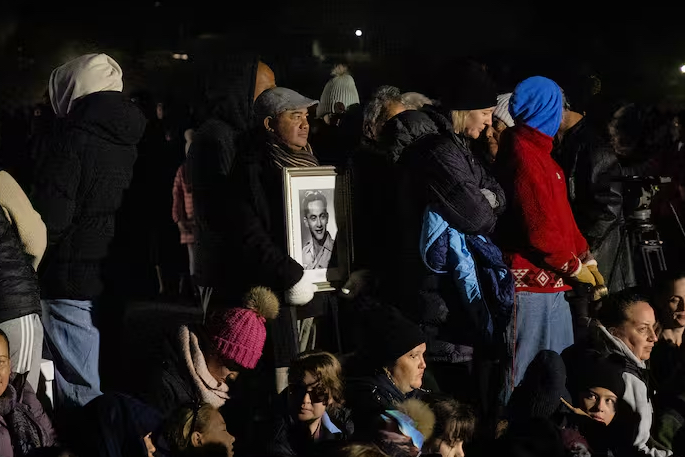 ANZAC Day dawn service at Muruika Soldiers cemetary, Ohinemutu. Photo / Andrew Warner.
ANZAC Day dawn service at Muruika Soldiers cemetary, Ohinemutu. Photo / Andrew Warner.
She says the men who came back were different to the ones who had left - they were shell-shocked, sometimes silent, confused and angry.
But she says thankfully many strong services offered ongoing support for them and their families.
“You and your ancestors supported them yesterday, we support them today and will continue to support them in the future.”
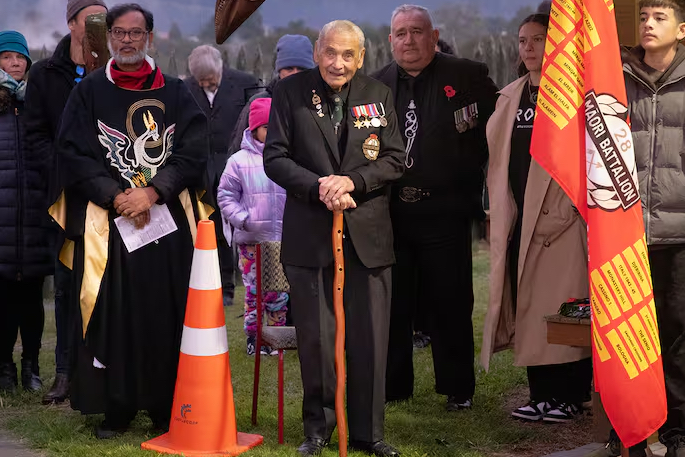 ANZAC Day dawn service at Muruika Soldiers cemetary, Ohinemutu. Sir Bob Gillies. Photo / Andrew Warner.
ANZAC Day dawn service at Muruika Soldiers cemetary, Ohinemutu. Sir Bob Gillies. Photo / Andrew Warner.
Students from Hato Pāora College in Feilding, who were at the service in support of Sir Robert, performed a haka for him following the service’s conclusion.
Sir Robert told the Rotorua Daily Post the occasion was very moving.
“My favourite part is to thank God that we are alright and we will always remember those who died and didn’t come home.”
Why is Anzac Day significant?
Anzac stands for Australian and New Zealand Army Corps.
In 1915, Australian and New Zealand soldiers formed part of the allied expedition that set out to capture the Gallipoli peninsula in Turkey to open the Dardanelles to the allied navies.
The ultimate objective was to capture Constantinople (now Istanbul), the capital of the Ottoman Empire, an ally of Germany.
The New Zealand Expeditionary Force left in October 1914, combined with their Australian counterparts to form the Anzacs. Along with some British units, they mounted an amphibious expedition.
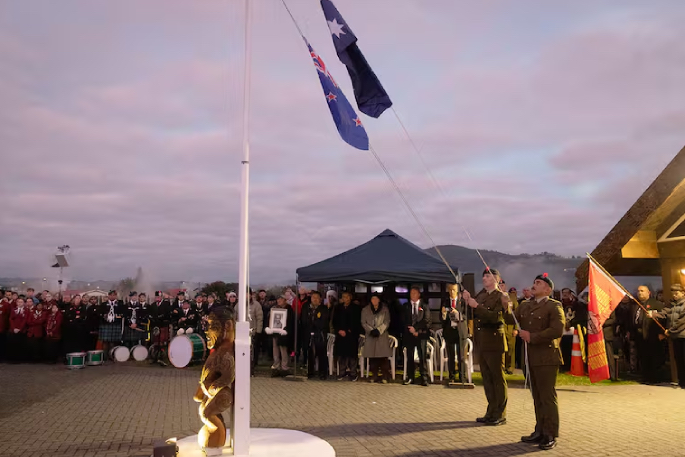 The raising of the New Zealand and Australian flags. Photo / Andrew Warner.
The raising of the New Zealand and Australian flags. Photo / Andrew Warner.
The Australian and New Zealand forces landed on Gallipoli on April 25, meeting fierce resistance. The assault ended some eight months later as a saga of errors and horrors.
The infantry were not trained properly to land from the sea, were inadequately supplied with artillery shells, had no grenades, were without engineers or material for the construction of piers, were never fully supplied with other materials and never reinforced quickly enough or in sufficient numbers.
The cost to New Zealand was 2721 dead and 4725 injured (some of whom subsequently died) – a staggering 88 per cent casualty rate.
New Zealand and Australia’s reaction was to establish Anzac Day as an annual day of commemoration.
What’s open on Anzac Day?
Anzac Day is considered a restricted trading day and most shops must remain closed until 1pm.
It is an offence to open and shop owners are liable for a fine of up to $1000.
Exemptions apply to small grocery shops, pharmacies, service stations, takeaways, bars, cafes and other places providing services.
Bars and cafes can sell alcohol as long as it’s accompanied by a meal.
Ode of Remembrance
They shall grow not old,
as we that are left grow old;
Age shall not weary them,
nor the years condemn.
At the going down of the sun
and in the morning
We will remember them.
Response:
We will remember them
Lest we forget
Kelly Makiha is a senior journalist who has reported for the Rotorua Daily Post for more than 25 years, covering mainly police, court, human interest and social issues.
-Kelly Makiha, Rotorua Daily Post

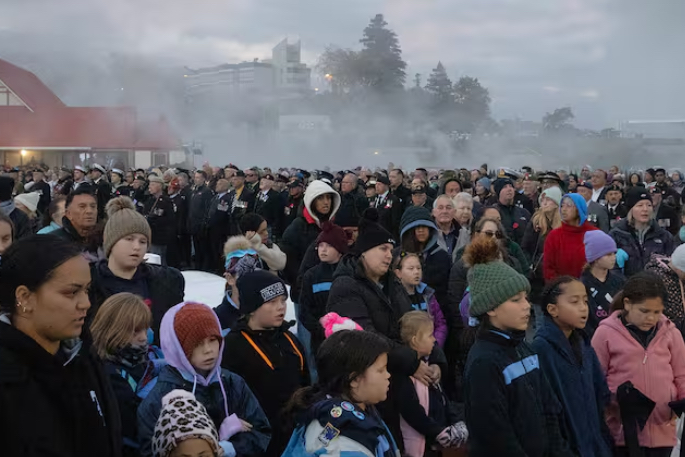

0 comments
Leave a Comment
You must be logged in to make a comment.